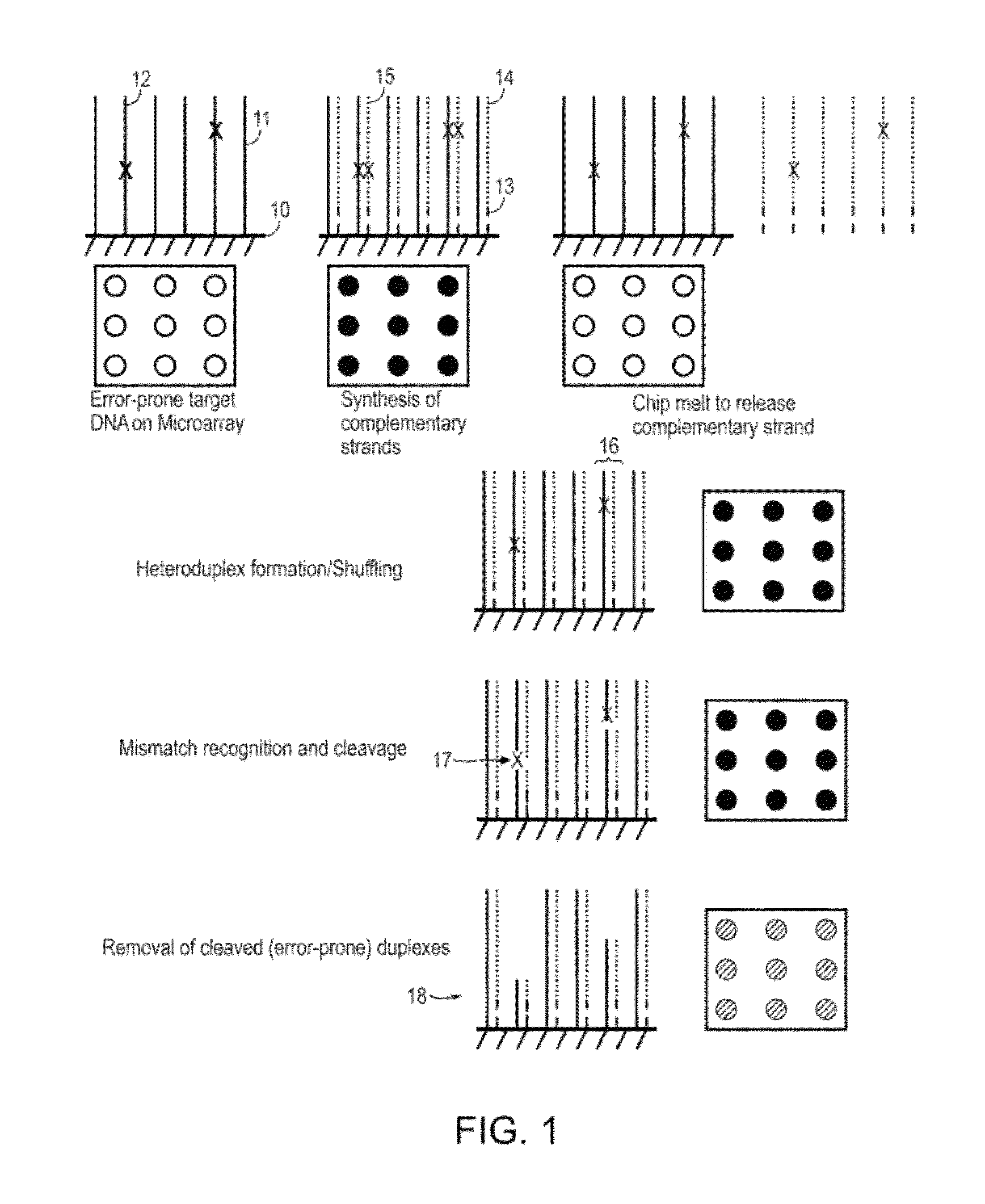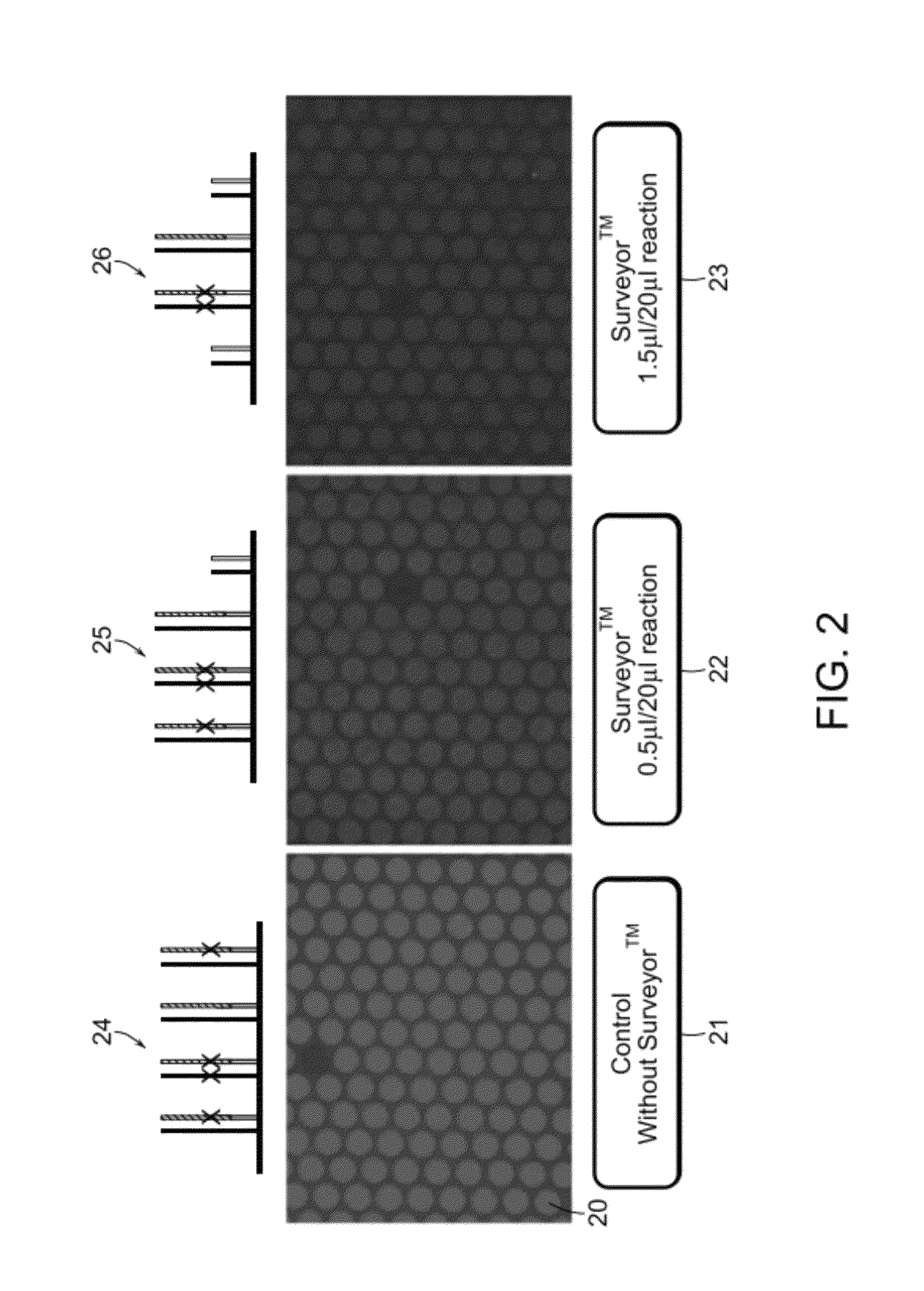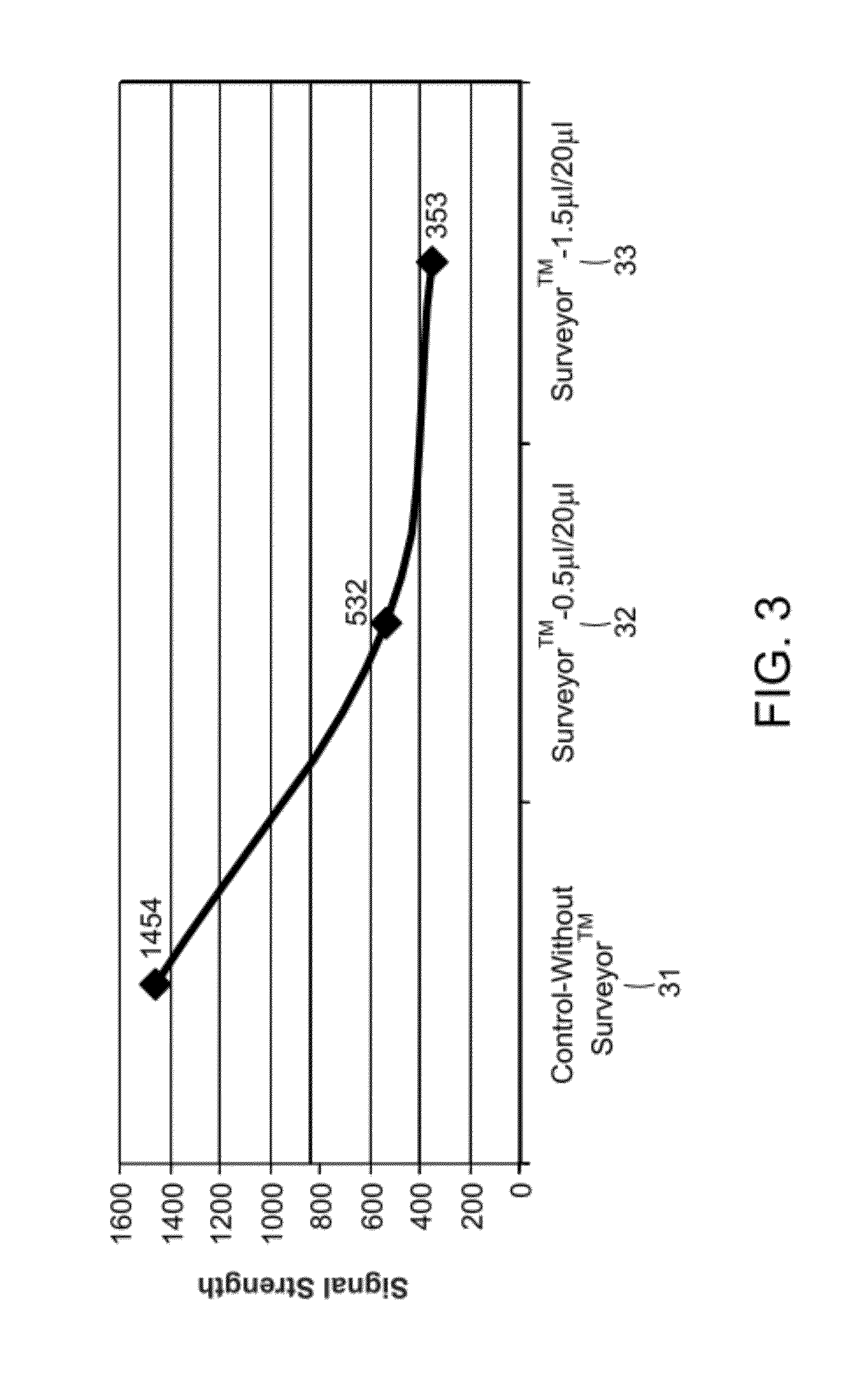Methods and apparatuses for chip-based DNA error reduction
a technology of error reduction and chip, applied in the field of methods and apparatuses for chip-based dna error reduction, can solve the problems of limiting the possibilities that may be explored by researchers, limiting the possibility of research, and generally impractical to directly construct large segments or assemblies of polynucleotides, and achieves the effect of reducing error rates and high fidelity
- Summary
- Abstract
- Description
- Claims
- Application Information
AI Technical Summary
Benefits of technology
Problems solved by technology
Method used
Image
Examples
example 1
Mismatch Cleavage and Removal Using Surveyor™
[0103]An example of mismatch cleavage and removal is shown in FIGS. 2 and 3. With reference to FIG. 2, microarray spots 20 were subject to labeling with in 0.005% Triton X-100, mM Tris-HCl (pH 7.4), 5 mM MgCl2, 7.5 mM dithiothreitol (DTT), 0.4 mM dATP, 0.4 mM dGTP, 0.4 mM dTTP, 4 μM Cy3CdCTP, 0.4 uμM of universal primer, 0.04 U / μl of Klenow fragment DNA polymerase exo− at 37° C. for 60 minutes. In the control experiment (left panel), shuffled microarray 21 received no enzymatic treatment. The center panel shows shuffled microarray 22 that received 0.5 μl Surveyor™ per 20 μl reaction volume. The right panel is shuffled microarray 23 that received 1.5 μl Surveyor™ per 20 ul reaction volume. 24, 25, and 16 are schematic representation of shuffled microarray 21, 22, and 23, respectively.
[0104]The image of shuffled microarray 21 is the brightest, suggesting that the most amount of Cy3 dye remained on the shuffled microarray 21 than 22 and 23. ...
example 2
Production of High Fidelity Oligonucleotides Using Surveyor™ Cleavage
[0105]Exemplary molecular reaction flow, process flow, and reagent flow for producing high fidelity oligonucleotides using Surveyor™ cleavage are shown in FIG. 4. Seven (7) steps were used in this example.
[0106]Step 1: Chip Prehybridization. Microarray was prehybridized with 0.005% Triton X-100, 0.2 mg / ml acytylated Bovine Serum Albumin, 10 mM Tris-HCl (pH 7.4), 5 mM MgCl2, 7.5 mM dithiothreitol (DTT) at 37° C. for 30 minutes.
[0107]Step 2: Primer Extension. Complementary strands on the chip were synthesized in 0.005% Triton X-100, 10 mM Tris-HCl (pH 7.4), 5 mM MgCl2, 7.5 mM dithiothreitol (DTT), 0.4 mM dNTPs, 0.4 μM of universal primer, 0.04 U / μl of Klenow fragment DNA polymerase exo− at 37° C. for 60 minutes.
[0108]Step 3: Surveyor™ hybe wash. Unincorporated nucleotides were removed with 0.9M NaCl, 60 mM NaH2PO4 and 0.005% Triton X-100. Chip was washed in Surveyor™ hybe buffer three times at room temperature.
[0109]...
PUM
| Property | Measurement | Unit |
|---|---|---|
| volumes | aaaaa | aaaaa |
| volumes | aaaaa | aaaaa |
| volumes | aaaaa | aaaaa |
Abstract
Description
Claims
Application Information
 Login to View More
Login to View More - R&D
- Intellectual Property
- Life Sciences
- Materials
- Tech Scout
- Unparalleled Data Quality
- Higher Quality Content
- 60% Fewer Hallucinations
Browse by: Latest US Patents, China's latest patents, Technical Efficacy Thesaurus, Application Domain, Technology Topic, Popular Technical Reports.
© 2025 PatSnap. All rights reserved.Legal|Privacy policy|Modern Slavery Act Transparency Statement|Sitemap|About US| Contact US: help@patsnap.com



